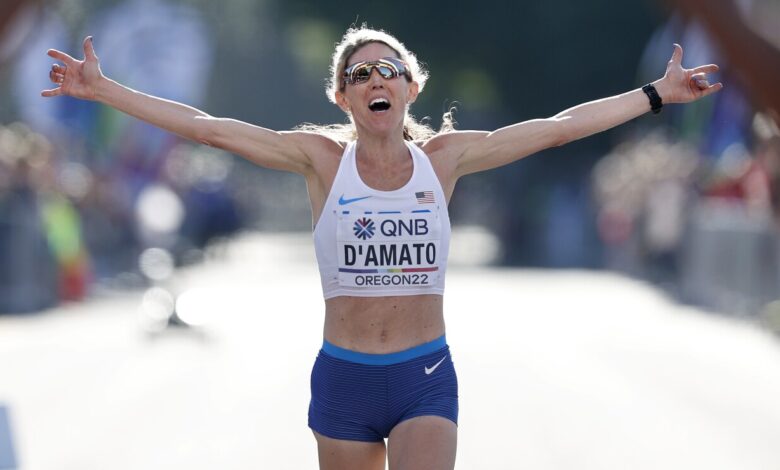Strategic Fitness Goals Can Balance the Stress of Law Practice

A few years back, my mother-in-law shared with our family an enduring bit of wisdom: The person looking back at her in the mirror wasn’t the person she saw in her own mind. The 30-something mother with boundless energy, chasing young children and making her way as an immigrant in this new country—that woman was now a good bit older.
In what seemed like a life lived by a different human, I had been a high school and collegiate runner at the University of Florida. But after college came career, law school, law firm—and so it was that for 17 years I barely ran a step.
Time spent ordering late-night Seamless dinners took its toll. I started thinking about my mother-in-law’s words of wisdom, realizing the cost of a lifestyle too heavily tilted toward time in a chair, in front of a screen, dealing with stress levels ranging from moderate to high—but almost never low to zero.
So in late 2019, I signed up, trained for, and then participated in a triathlon at Rockaway Beach in New York. It didn’t go well, but I’ve stuck with it and improved over time, recently completing an Ironman 70.3 in Chattanooga with strong results. My journey began with a focus on fitness, but it has led to a holistic improvement of health, stress, and diet—one that’s setting a baseline now for my children.
Holistic Improvements
The commitment level of time, resources, and energy is a deeply personal choice. But no matter your place on that spectrum, retaking ownership of your body, your health, and how you spend your day can be empowering.
Direct health benefits are obvious. Increased activity levels lead to stronger hearts, lower stress, lower blood pressure, and more durable ligaments, tendons, and muscles. Stress management benefits may be less obvious, but for those of us actively practicing law, stress becomes so common that we may not notice the elevated baseline of worry—over deadlines, responses, “getting things right,” and navigating our careers.
Taking time away from that vicious cycle to focus on an elevated running trail, or even a pool’s blue line, is therapeutic. And indirect health benefits begin to accrue over time, with each small change leading to massive shifts in lifestyle over time.
If you’ve spent the morning logging a 10-mile run around a beautiful lake, the idea of consuming a pint of ice cream sounds a lot less tempting (though never really reaches zero!).
To paraphrase Mahatma Gandhi, over time, the focus on the daily process—the means—becomes the driving force and renders secondary the final goal—the ends. Your initial goal may be to complete a half marathon. A worthy goal to be sure, but once the means of daily morning runs, weekly yoga trips, and healthier eating take hold, the end shifts, too, perhaps becoming a marathon. Though the goals change, the journey itself becomes the reward.
Finding Time and Balance
Of course, finding time for all of this remains a challenge. Success will require some perseverance, especially early on, while habits haven’t solidified and every trip out the door feels forced and heavy. This eventually will get easier, but here are some initial tips that have worked for me.
Morning is almost always best because afternoons are too much of a moving target. Work demands linger or extend, personal duties (such as picking up children from school) interfere, and circumstances change. Finishing a workout early in the morning feels great, lifts moods throughout the day, and provides the reassuring feeling that—even if everything else goes sideways—at least something went right.
Relying on willpower alone is too hard; you need to create habits. I recommend making a regular schedule, writing it down, and sticking to it closely. Perhaps run every MWF morning, spin classes on Tuesday afternoons, long bike rides with a local group on Saturdays, and swim with a local master team every Thursday. Over time, the schedule becomes automatic and helps simplify your life with structure rather than complicating it with incremental tasks.
Another way to help create those habits is by adding accountability through working out with friends and groups or signing up for classes. This is more fun, may lead to better workouts, and can even result in forging new friendships (who don’t talk or even know much about discovery responses or diligence requests).
Training Principles
Finally, I’d like to offer a few key principles I’ve learned from others in the endurance sports training world over the years.
First, focus on recovery. Running and triathlon coaches often have come to realize that going “hard” too often is detrimental; paces and distances place second to consistency. Second, fitness and performance are part of a long game, with peak performance requiring years of consistent effort. And third, another bit of age-old wisdom: The first steps are the hardest.
If you’re interested in regaining lost fitness or finding a path to a more active lifestyle, the best thing is to set aside fears of failure or disappointment. Whether you choose yoga, beach volleyball, mountain hikes, or triathlons, you’ll be “better” than some and “worse” than others. The key is to just start doing.
You’ll improve over time. Very, very few people in the arena will judge or criticize. Children seem to know this intuitively, diving into things with little fear or timidity … so find some of that inner child and get out there!
This article does not necessarily reflect the opinion of Bloomberg Industry Group, Inc., the publisher of Bloomberg Law and Bloomberg Tax, or its owners.
Author Information
Charles Lee is associate general counsel at McKinsey.
Write for Us: Author Guidelines


